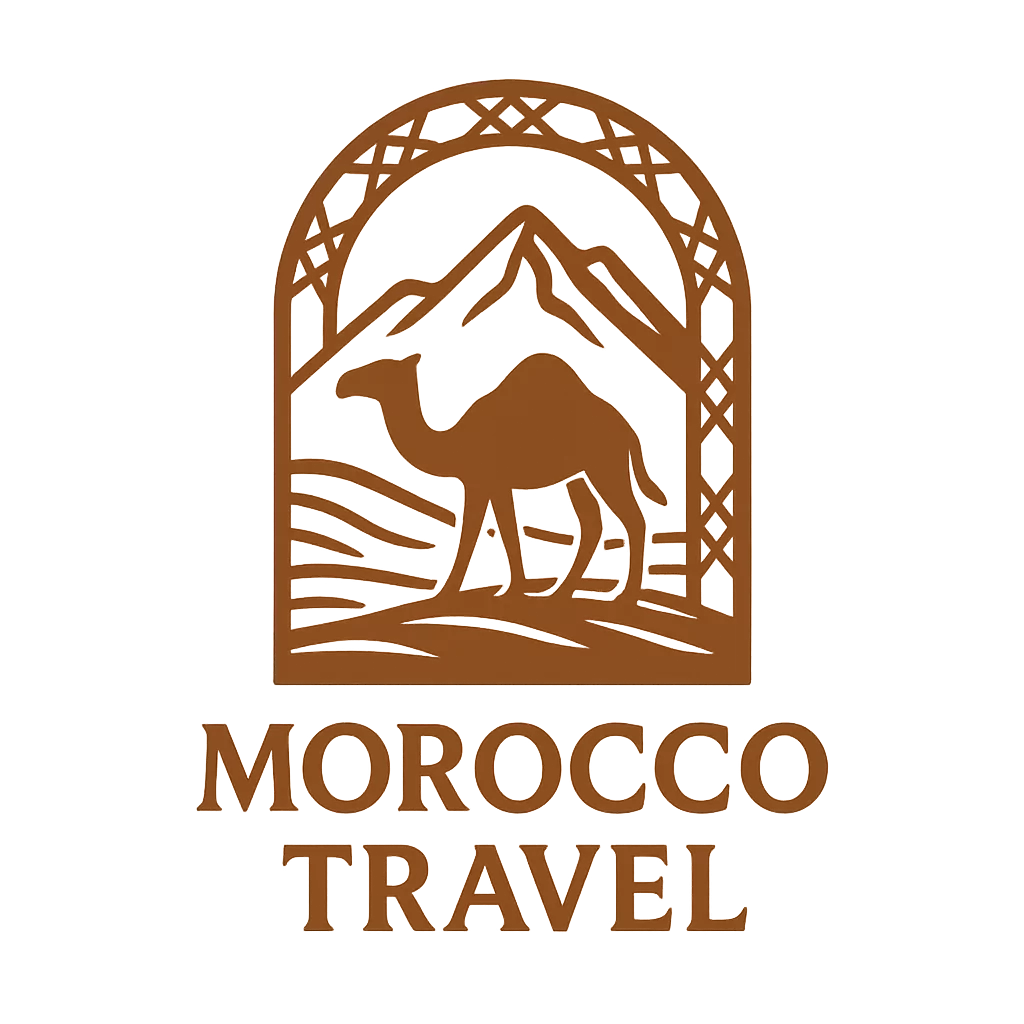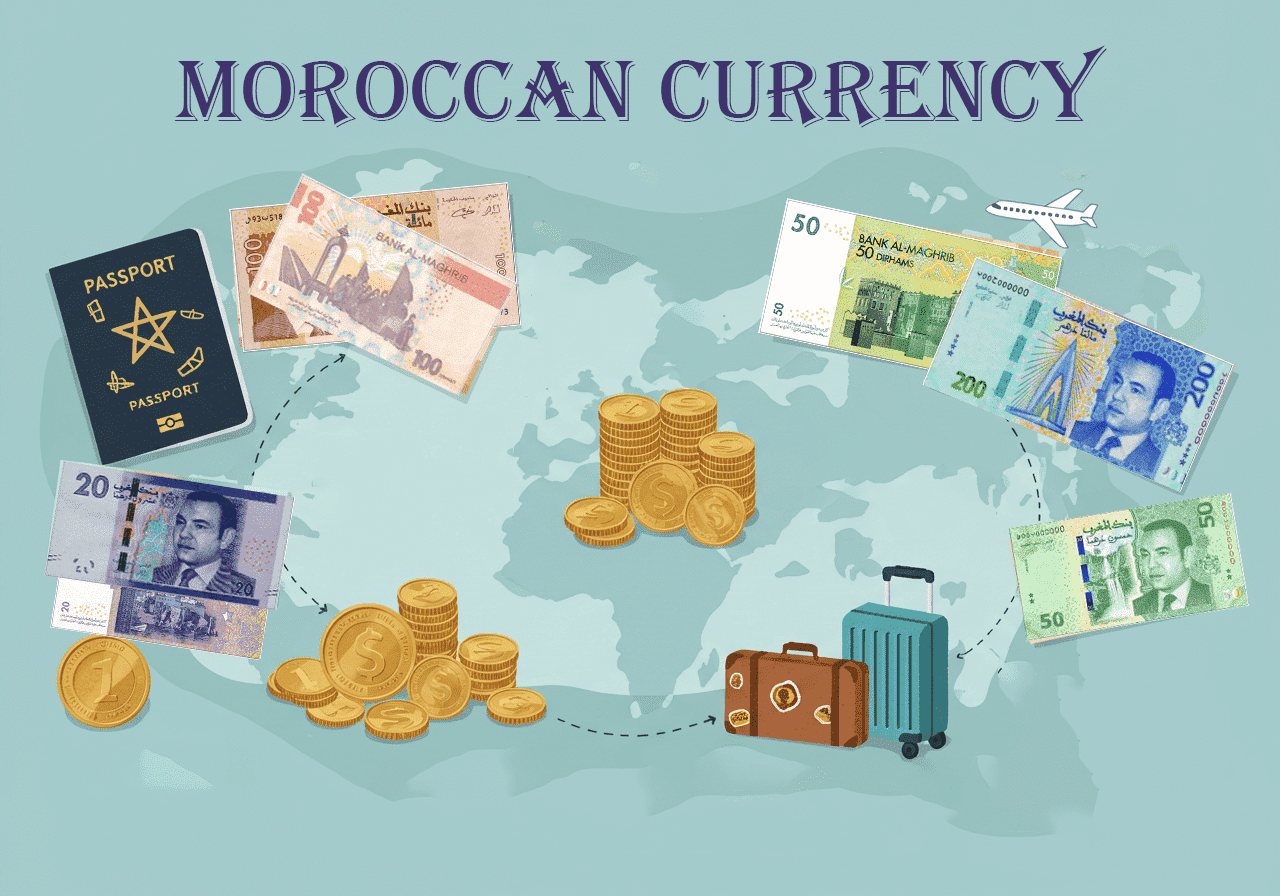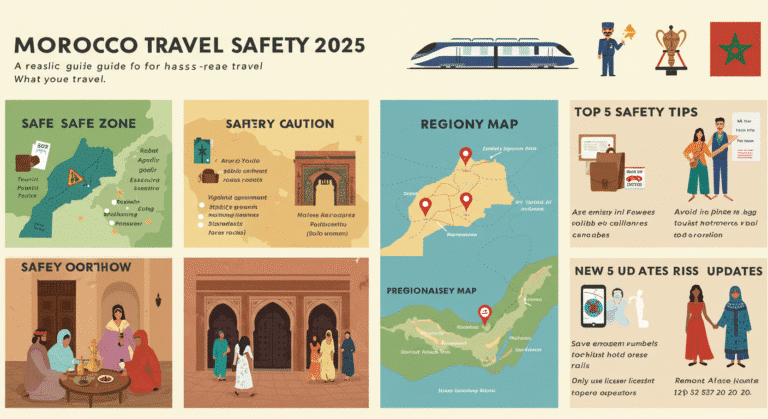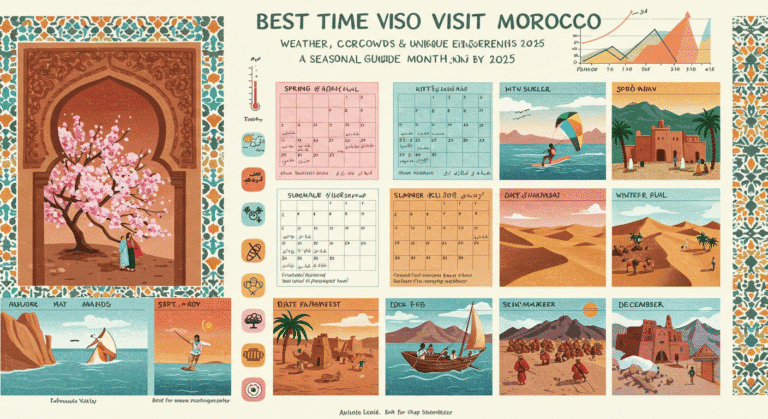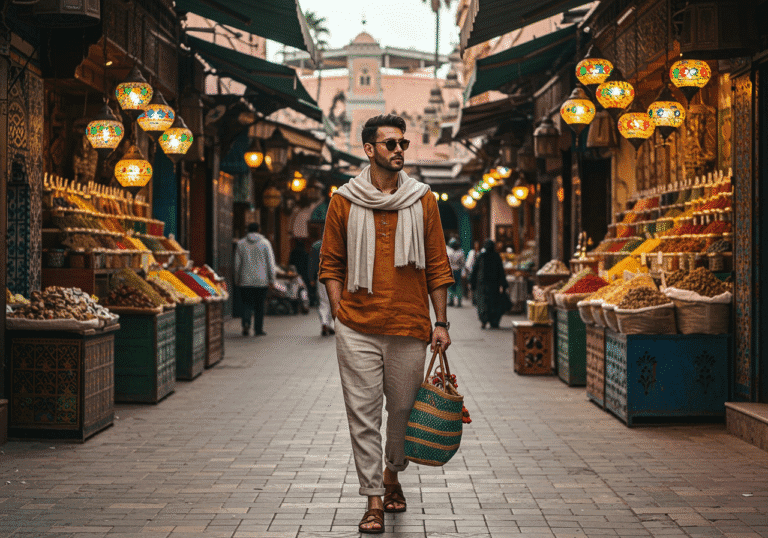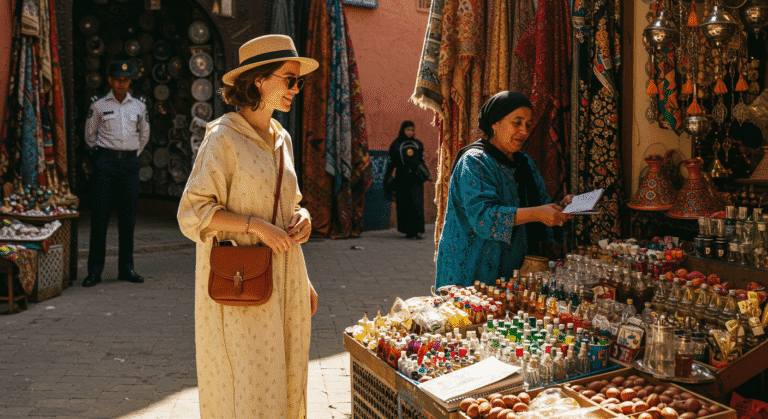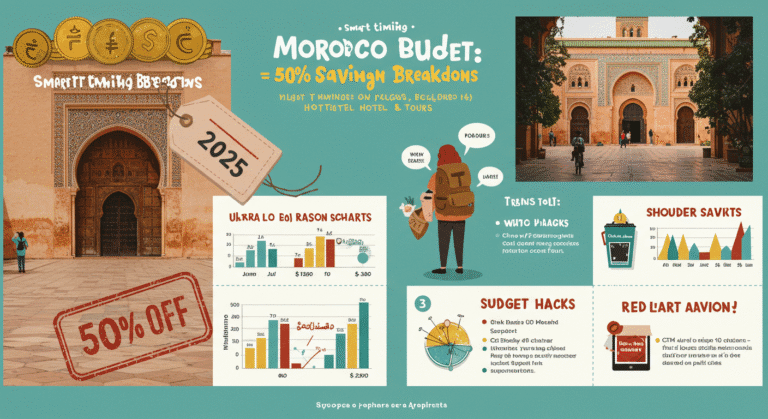Morocco Currency Tips for Travelers
Introduction: Navigating Morocco’s Financial Landscape
Did you know that 78% of first-time travelers to Morocco report confusion about handling the local currency? The Moroccan Dirham (MAD) operates in a controlled currency environment that differs significantly from what many international travelers are accustomed to. Understanding Morocco currency basics isn’t just helpful it’s essential for a smooth journey through this North African gem.
Whether you’re wandering through the labyrinthine streets of Fez, bargaining in Marrakech’s vibrant souks, or relaxing along Essaouira’s windswept coastline, knowing how to navigate the dirham maroc to dollar conversion and local payment customs will transform your experience. This comprehensive guide breaks down everything from exchange rates and ATM accessibility to tipping etiquette and money-saving strategies across Morocco’s diverse cities.
Travel Checklist: Money Essentials for Morocco
Before departing for the land of mint tea and magnificent medinas, ensure your financial preparations are as thorough as your itinerary. Here’s what to arrange before and during your Moroccan adventure:
Before Departure:
- Multi-currency wallet or pouch: Keep your home currency separate from Morocco currency (MAD)
- Notification to your bank: Alert them about travel to Morocco to prevent card freezes
- Currency conversion app: Download XE or similar for real-time dollar vs Moroccan dirham rates
- Cash in small USD or EUR denominations: Bring $200-300 worth for immediate exchange
- Multiple payment methods: Pack at least two different credit/debit cards (Visa/Mastercard preferred)
- Money belt or secure wallet: Essential for navigating crowded markets
- Copies of card details: Store securely in case of loss (separate from actual cards)
Upon Arrival:
- Small amount of MAD: Exchange just enough at the airport for immediate needs (transportation, snacks)
- Local SIM card: For accessing banking apps and currency converters
- Receipt folder: Keep exchange receipts if you plan to convert remaining MAD back home
Pro Tip: While many travelers obsess over getting the perfect exchange rate, the difference between exchanging $100 USD to MAD at the airport versus in town typically amounts to less than $5. Don’t waste precious vacation time hunting for marginally better rates unless exchanging large sums.
Budget Breakdown: Understanding the Value of the Dirham
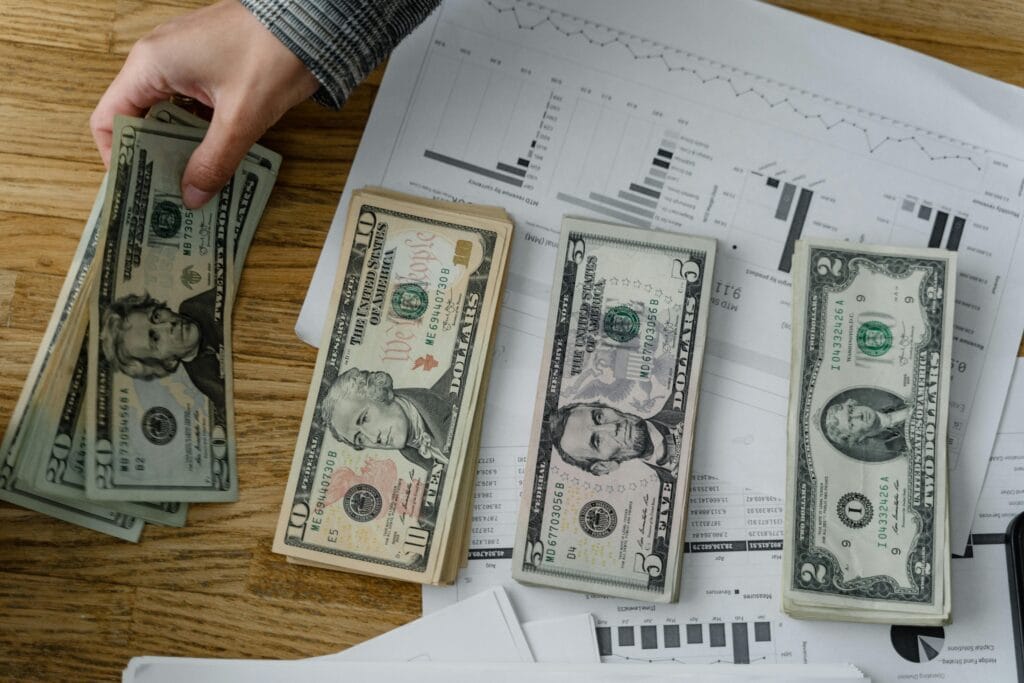
To truly grasp Morocco currency, you need to understand what your money can actually buy. The current exchange rate hovers around 1 USD to 10 MAD (verify current rates before travel), but what does that mean in practical terms? Here’s a comprehensive budget breakdown across different spending categories:
Accommodation (per night):
- Budget: 80-200 MAD (hostels/basic riads)
- Mid-range: 250-600 MAD (comfortable riads/3-star hotels)
- Luxury: 800-3000+ MAD (boutique hotels/luxury riads/resorts)
Meals:
- Street food: 10-30 MAD (sandwich, msemen, harcha)
- Local restaurants: 40-80 MAD (tagine, couscous dish)
- Mid-range restaurant: 100-200 MAD (per person, multi-course)
- High-end dining: 250-500+ MAD (per person)
Transportation:
- Petit taxi: 7-25 MAD (in-city rides, depending on distance)
- Grand taxi: 20-50 MAD (per person for shared intercity taxi)
- Local bus: 4-10 MAD (city routes)
- Intercity bus/train: 80-200 MAD (depending on distance and class)
- Car rental: 250-500+ MAD per day (plus fuel)
Activities:
- Museum/monument entry: 10-70 MAD
- Hammam (public bath): 10-20 MAD (local) or 150-350 MAD (tourist spa)
- Guided tour: 100-300 MAD (group tours) or 400-800 MAD (private guides)
Money-Saving Insider Tips:
- Currency conversion strategy: Instead of trying to mentally convert every MAD price to USD (or your home currency), establish “anchor prices.” For example, know that a good tagine should cost roughly 50-70 MAD or that a fair petit taxi ride across Marrakech shouldn’t exceed 30 MAD.
- ATM withdrawal approach: When converting usd to mad morocco, withdraw larger amounts less frequently to minimize foreign transaction fees. Most Moroccan ATMs limit withdrawals to 2000-3000 MAD per transaction.
- Negotiation benchmarks: In markets, start negotiations at 40-50% of the asking price and expect to settle around 60-70% for a fair deal.
- Destination price variations: Budget requirements can vary dramatically between locations:
- Marrakech and Casablanca: Highest costs for accommodations and dining
- Essaouira and Fez: Moderate costs with better values
- Chefchaouen and smaller towns: Lowest overall costs
Sustainable & Cultural Alternatives: Money Practices with Purpose
Making mindful choices about how you spend your morocco currency can enhance both your experience and your positive impact on local communities.
Community-Based Experiences:
- Homestay accommodations: Many rural areas offer family stays for 150-300 MAD per night including meals
- Cooperative workshops: Women’s argan oil cooperatives and artisan collectives offer authentic experiences while supporting local economies
- Heritage preservation initiatives: Some restored kasbahs and historical sites fund preservation through tourism
Digital Nomad Financial Tips:
- Co-working spaces: Available in major cities from 70-120 MAD/day with reliable internet
- Long-term rentals: Negotiate monthly rates in MAD (avoid paying in euros/dollars) for 40-60% savings off nightly rates
- Banking apps: Use Wise (formerly TransferWise) for better mad to us dollars conversion rates for extended stays
Family-Friendly Budget Options:
- Apartment rentals: Often more economical than hotels for families needing multiple rooms
- Local markets: Purchase ingredients for simple meals to reduce food costs
- Multi-site passes: Some cities offer combined tickets for multiple attractions at reduced rates
Cultural Insight: The Moroccan concept of “Baraka” (blessing/abundance) often influences financial interactions. Generosity and fairness are highly valued; being overly aggressive about small amounts in haggling can damage relationships and experiences.
Common Mistakes to Avoid: Currency Pitfalls in Morocco
Even seasoned travelers make errors when navigating Morocco’s financial landscape. Here are the most common mistakes and how to avoid them:
Exchange Rate Errors:
- Airport exchange confusion: Airport kiosks advertise “0% commission” but offer poorer rates. Exchange only what you need for immediate transportation.
- Misunderstanding dirham controls: The MAD is a closed currency, meaning it cannot legally be taken out of or brought into Morocco in large amounts (limited to 2000 MAD).
- Credit card calculation errors: When choosing whether to pay in MAD or your home currency on credit card machines, always select MAD to avoid poor conversion rates.
ATM Pitfalls:
- Bank selection oversight: Stick to major banks like Attijariwafa, BMCE, or Banque Populaire for ATMs. Avoid independent ATMs with higher fees.
- Withdrawal timing mistakes: ATMs frequently run out of cash before weekends and holidays. Plan larger withdrawals in advance.
- Insufficient withdrawal amounts: Many travelers make too many small withdrawals, accumulating foreign transaction fees.
Market Money Mishaps:
- Calculation confusion: The arabic numeral system in Morocco can be confusing confirm prices by having vendors write them down.
- Denomination mix-ups: The 20 MAD note and 200 MAD note look similar always verify before handing over cash.
- Change shortchanging: Always count your change immediately, especially in busy markets.
Cultural Currency Faux Pas:
- Public money displays: Flashing large amounts of cash can make you a target. Use money belts or secure pockets.
- Photographing money changers: This is often prohibited and can result in confrontation.
- Expecting card acceptance everywhere: Many small vendors, riads, and markets remain cash-only operations.
Expert Tip: Create a “day wallet” with just the amount you plan to spend each day, leaving reserve cash and extra cards in your accommodation safe. This limits potential losses and helps with budgeting.
Conclusion: Mastering Morocco’s Financial Landscape
Navigating Morocco currency doesn’t have to be intimidating. With proper preparation and understanding of the Moroccan dirham (MAD), you’ll confidently handle everything from ATM withdrawals to market negotiations. Remember that exchange rates fluctuate, but the experience of paying for a hand-crafted souvenir or that perfect tagine creates memories worth far more than the dirhams you’ll spend.
Have you visited Morocco recently? Share your own currency tips or questions about managing money in Morocco in the comments below. For personalized advice on planning your Moroccan adventure, sign up for our newsletter featuring destination-specific financial guides.
FAQs About Morocco Currency
What is the currency used in Morocco?
Morocco uses the Moroccan Dirham (MAD). Banknotes come in denominations of 20, 50, 100, and 200 MAD. Coins include 1, 2, 5, and 10 MAD, plus smaller santeem coins (1 MAD = 100 santeems).
What’s the current exchange rate between USD and Moroccan Dirham?
As of May 2025, the average exchange rate is approximately 1 USD to 10 MAD, though rates fluctuate daily. For the most current usd to dh maroc conversion, check reliable currency apps like XE or Wise before your trip.
Can I use credit cards in Morocco?
Credit cards are widely accepted in major cities, mid-range to luxury hotels, and larger restaurants. Visa and Mastercard are most common, while American Express has limited acceptance. Always carry cash when venturing into medinas, smaller towns, or markets.
Should I exchange money before traveling to Morocco?
It’s not necessary to convert large amounts before arrival. Bring a small amount (€50-100 or equivalent) for immediate needs, then use ATMs for better rates once in Morocco. Remember that legally importing or exporting more than 2000 MAD is prohibited.
Are there ATMs readily available in Morocco?
ATMs are plentiful in all major cities and tourist destinations. Even smaller towns typically have at least one bank ATM. Most dispense a maximum of 2000-3000 MAD per transaction with daily limits around 5000-8000 MAD depending on your bank.
Can I use Euros or US Dollars in Morocco?
While some tourist establishments may accept Euros or US Dollars, it’s always better to use Morocco currency (MAD). Paying in foreign currency typically results in poor exchange rates and confusion over prices.
What about tipping in Morocco?
Tipping is customary but not at Western levels. In restaurants, 5-10% is appropriate for good service. For hotel porters, 10-20 MAD per bag is standard. Tour guides may receive 100-200 MAD per day depending on group size and service quality.
Is it better to withdraw cash or exchange currency at exchange offices?
ATM withdrawals typically offer rates comparable to currency exchange offices (bureau de change). However, check your bank’s foreign transaction fees some travelers find exchanging cash more economical if their bank charges high fees.
How can I identify counterfeit Moroccan Dirhams?
Authentic Moroccan banknotes have clear watermarks, security threads, and crisp printing. Hold notes up to light to check these features. Always count money received from exchanges or as change in good lighting.
What should I do with leftover Dirhams?
You can exchange MAD back to your home currency at the airport before departure (bring your initial exchange receipts), spend it on last-minute purchases, or save small amounts as souvenirs. Remember the 2000 MAD export restriction.
This comprehensive guide to morocco currency was last updated in May 2025. Exchange rates and financial information may change, so verify current rates before travel. Share your own Morocco money tips in the comments below!
